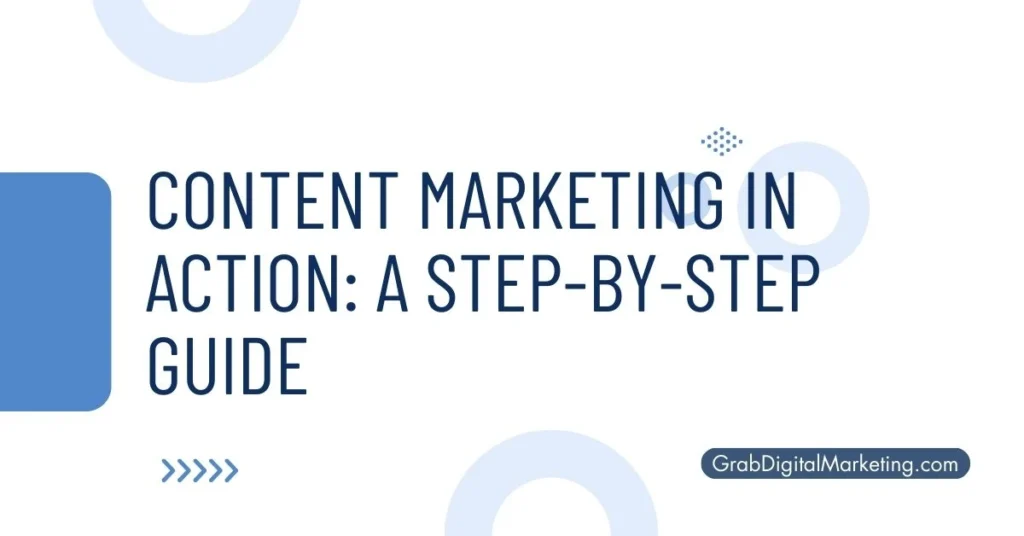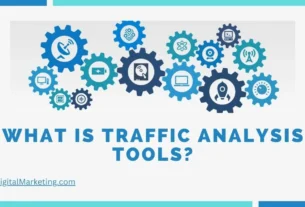Content marketing is a strategic approach focused on creating and distributing valuable, relevant, and consistent content to attract and retain a clearly defined audience—and, ultimately, to drive profitable customer action.

Table of Contents
Understanding Content Marketing

Content marketing is an essential strategy for businesses to connect with their target audience, provide value, and build lasting relationships. Unlike traditional advertising, which directly promotes products or services, content marketing aims to engage and educate the audience through various forms of content. This approach helps establish trust, credibility, and brand loyalty, ultimately leading to increased sales and customer retention.
Types of Content

- Blog Posts: Informative articles that address the needs and interests of the target audience. They help drive organic traffic to the website and improve search engine rankings.
- Social Media Posts: Short and engaging content shared on social media platforms to connect with the audience, promote brand awareness, and drive traffic to other content.
- Videos: Visual content that can be educational, entertaining, or promotional. Videos are highly engaging and can be shared on platforms like YouTube, social media, or a company’s website.
- Infographics: Visual representations of data or information that make complex concepts easier to understand. They are highly shareable and can drive traffic to the website.
- eBooks and Whitepapers: In-depth guides or reports that provide valuable information on a specific topic. They are often used to generate leads by offering them in exchange for contact information.
- Podcasts: Audio content that can be educational, entertaining, or inspirational. Podcasts are convenient for the audience to consume while multitasking.
- Webinars: Live or recorded presentations that provide valuable information on a specific topic. Webinars allow for real-time interaction with the audience and can generate leads.
- Case Studies: Detailed accounts of how a product or service has helped a customer achieve their goals. Case studies build credibility and provide social proof.
How to Write Content?

- Identify Your Audience: Understand who your target audience is and what their needs, interests, and pain points are. This will help you create content that resonates with them.
- Set Clear Goals: Determine the purpose of your content. Are you aiming to educate, entertain, inspire, or promote? Having clear goals will guide your content creation process.
- Conduct Keyword Research: Identify relevant keywords and phrases that your audience is searching for. Use these keywords strategically in your content to improve search engine rankings.
- Create a Compelling Headline: Your headline should grab the audience’s attention and encourage them to read further. Make it clear, concise, and engaging.
- Write Engaging and Valuable Content: Provide useful information that addresses the needs and interests of your audience. Use a conversational tone, and include personal anecdotes, examples, and visuals to make your content more relatable.
- Include a Call to Action (CTA): Encourage your audience to take the next step, whether it’s subscribing to your newsletter, downloading a guide, or contacting you for more information.
- Edit and Proofread: Ensure your content is free of errors and flows smoothly. Use tools like Grammarly to check for grammar and spelling mistakes.
- Optimize for SEO: Use keywords naturally throughout your content, include meta descriptions, and optimize images with alt text. This will help improve your search engine rankings.
- Promote Your Content: Share your content on social media, through email newsletters, and on relevant online communities. The more exposure your content gets, the more effective it will be.
Content Marketing in Action: A Step-by-Step Guide

- Develop a Content Strategy: Outline your goals, target audience, content types, and distribution channels. Create a content calendar to plan and organize your content.
- Create High-Quality Content: Focus on producing valuable and engaging content that addresses the needs and interests of your audience. Quality over quantity is key.
- Distribute Your Content: Share your content across various channels to reach a wider audience. This includes your website, social media platforms, email newsletters, and online communities.
- Engage with Your Audience: Respond to comments, questions, and feedback from your audience. Building relationships with your audience will help increase trust and loyalty.
- Measure and Analyze Results: Use analytics tools to track the performance of your content. Monitor metrics such as website traffic, social media engagement, and conversion rates. Use this data to refine your content strategy and improve future content.
- Continuously Improve: Content marketing is an ongoing process. Continuously evaluate and adjust your strategy based on the performance of your content and changes in your audience’s needs and interests.
Content marketing offers a plethora of benefits for businesses. Here are some of the most significant advantages:

1. Increased Brand Awareness
Creating valuable and relevant content helps businesses reach a broader audience. As more people engage with your content, your brand becomes more recognizable and trusted.
2. Improved Search Engine Rankings
Consistently publishing high-quality content that is optimized for search engines can improve your website’s visibility. This leads to higher rankings on search engine results pages (SERPs) and drives organic traffic to your site.
3. Establishing Authority and Credibility
By providing valuable information and insights, businesses can position themselves as industry experts. This builds trust with the audience and establishes the brand as a credible source of information.
4. Building Strong Customer Relationships
Content marketing allows businesses to connect with their audience on a deeper level. By addressing their needs, interests, and pain points, you can foster strong, long-lasting relationships with your customers.
5. Generating Leads
Offering valuable content, such as eBooks, whitepapers, or webinars, in exchange for contact information can help generate leads. This allows businesses to build a database of potential customers who are interested in their products or services.
6. Boosting Conversion Rates
High-quality content that addresses the audience’s needs and concerns can guide them through the buyer’s journey. By providing the right information at the right time, businesses can increase the likelihood of converting leads into customers.
7. Cost-Effective Marketing Strategy
Content marketing is often more cost-effective than traditional advertising methods. Creating and distributing content can yield long-term results, providing a higher return on investment (ROI) over time.
8. Enhancing Social Media Engagement
Sharing valuable and engaging content on social media platforms can increase likes, shares, and comments. This helps expand your reach and build a community of loyal followers.
9. Supporting Other Marketing Efforts
Content marketing complements other marketing strategies, such as email marketing, social media marketing, and pay-per-click (PPC) advertising. It provides valuable assets that can be repurposed and shared across different channels.
10. Educating Your Audience
Content marketing allows businesses to educate their audience about their products, services, and industry trends. This helps customers make informed decisions and increases the likelihood of them choosing your brand over competitors.
11. Encouraging Customer Loyalty
By consistently providing valuable content, businesses can keep their audience engaged and interested. This helps build loyalty and encourages repeat business.
12. Gaining Customer Insights
Analyzing the performance of your content can provide valuable insights into your audience’s preferences and behaviors. This information can be used to refine your content strategy and create more targeted and effective content in the future.
Content marketing is a powerful tool for businesses to connect with their audience, build trust, and achieve their marketing goals. By leveraging the various types of content and following best practices, businesses can reap the numerous benefits of content marketing and drive long-term success.
Conclusion
Content marketing is a powerful strategy for businesses to connect with their audience, provide value, and build lasting relationships. By understanding the different types of content and following best practices for creating and promoting content, businesses can achieve their marketing goals and drive profitable customer action. Remember, the key to successful content marketing is to consistently produce high-quality content that resonates with your audience and addresses their needs.


